Running the Race That ‘Born to Run’ Made Famous
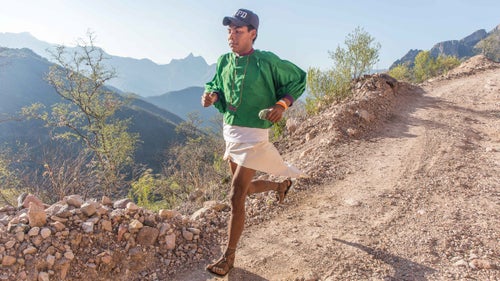
The first Copper Canyon ultramarathon took place in Urique, Mexico, in 2003, and was organized by legendary ultrarunner Micah True, also know as Caballo Blanco. True—famously depicted in Christopher McDougall’s bestselling 2009 book, —wanted the race to help preserve the local culture of the Tarahumara people, who dress in sandals, skirts, and long-sleeve tops and have an extraordinary capacity to run long distances.
In 2012, the 58-year-old True went missing during a run in New Mexico’s Gila Wilderness and was found dead days later. Soon afterward, the annual race in Copper Canyon was renamed the Caballo Blanco Ultra in his honor. , a 29-year-old Montana-based photographer who has been shooting ultras for several years, traveled to Urique in March to document the 15th anniversary of this infamous 50-mile race.
The city of Urique, which lies at the base of the Copper Canyon, now organizes the race. “It’s like if you put a town at the bottom of the Grand Canyon,” Hermsmeyer says. The Caballo Blanco Ultra and festival is by far the city’s largest event of the year, but when the race was , its future was in doubt. Only six nonlocal runners ran the following year. The Caballo Blanco Ultra returned in 2017, with more than 700 Tarahumara, about 80 Mexicans, and 60 other runners from around the world.
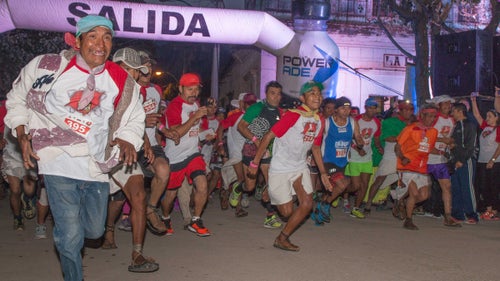
The race has grown in size and notoriety, especially after it was made famous following McDougall’s book. Beginning in 2006, internationally competitive ultrarunners—most notably Scott Jurek—started traveling to Copper Canyon. Yet it remains more of a cultural experience than a typical competition, Hermsmeyer says. Many nonelite Tarahumara runners will sprint off the starting line, laughing and vying for a single moment of glory.
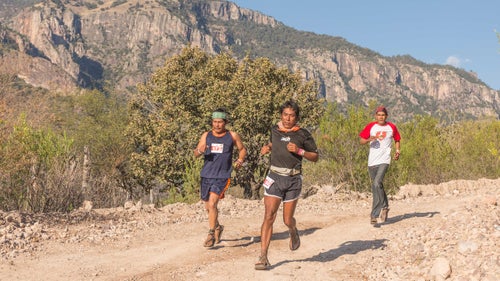
The Tarahumara are fast. When Scott Jurek traveled to Urique for the 2006 Copper Canyon Ultra—as depicted in Born to Run—he lost to Arnulfo Quimare (center). In 2007, Jurek returned and won the race. According to Hermsmeyer, the Tarahumara tend to start the race at a blistering speed. Hermsmeyer was shooting part of the race at mile 15 and says more than a dozen runners, many of them Tarahumara and some of whom were wearing jeans, came through that section under course-record pace. For that reason, international runners are typically cautioned not to try to hang with the locals early on.

Among the most celebrated Tarahumara runners is Miguel Lara, who has won the Caballo Blanco several times and placed sixth in this year’s race. Lara (second from left) is accompanied on a 13-mile training run before the race by Michael Miller (far left), an American liaison for the race and a close friend of the late Micah True. In this photo, Miller carries a red shirt that once belonged to True.
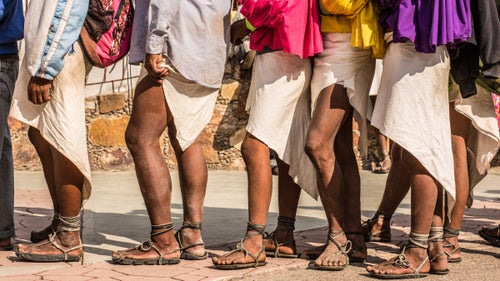
The sandals in which the Tarahumara run—called huaraches—have rubber soles made from old tires and held together with leather straps. In Born to Run, McDougall credited the huaraches with some of the Tarahumara’s running prowess and consequently launched the minimalist footwear craze.
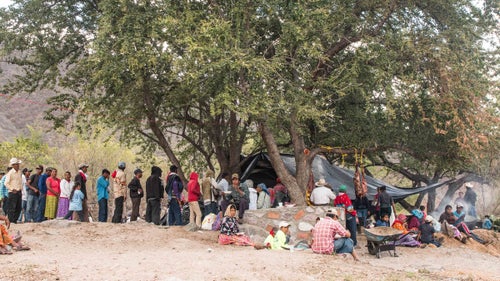
Each year, the Tarahumara emerge from the canyon system and are hosted by the city of Urique. The city builds temporary camps, gives them sleeping pads, and provides food for the crowd. The Tarahumara also receive corn vouchers for running the race. If they hit certain checkpoints along the course, they get wristbands that can later be redeemed for vouchers as well. According to Miller, many of the Tarahumara depend on these subsidies to feed their families—most of the Tarahumara are subsistence farmers who grow corn, fruit, potatoes, beans, and squash.
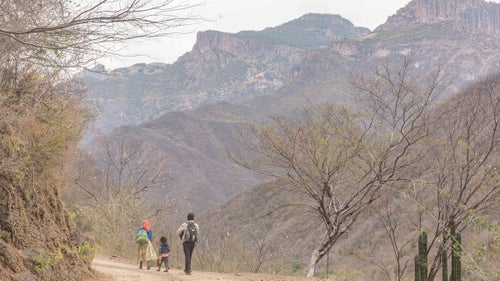
For both Mexican and international runners, reaching Urique is a logistical challenge. Hermsmeyer and Miller, for instance, drove 20 hours south from Phoenix through northern Mexico Tarahumara families will hike in for as many as three or four days to reach Urique.
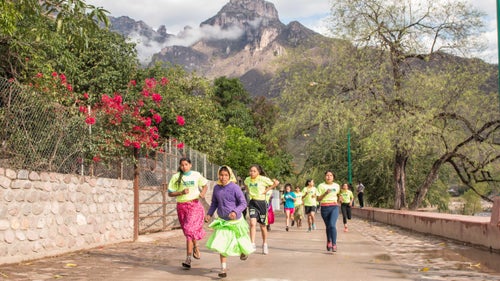
The day before the Caballo Blanco Ultra, Urique hosts a 5K race for kids in the surrounding area. This year, more than 1,000 children participated. After the race, Urique puts on a festival to commemorate the weekend and stoke energy for the following day’s 50-mile race.
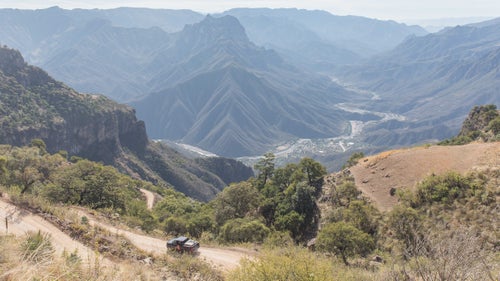
The Caballo Blanco Ultra course features a series of out-and-backs, primarily on dirt roads. The runners start in Urique (pictured here) and pass through the city two more times before finishing there. The terrain is rocky and hilly, and some runners who try to follow the Tarahumara get lost.
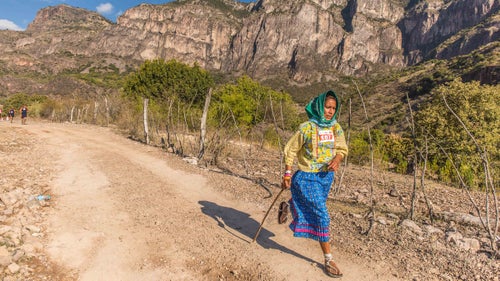
“The men get a lot of attention, but the women racers are crazier,” Hermsmeyer says. Some of the women running wear dresses, skirts, and headdresses, and they’re fast. Miller, an experienced ultrarunner who has raced the Caballo Blanco Ultra the past few years, remembers an older woman deep in the race, wearing a long dress and flimsy sandals, who would sprint ahead of him every time he got close to passing her.